

 |
 |
|
| |
||
|
Vol. 8 No. 116 WE COVER THE WORLD Friday October 30, 2009 |
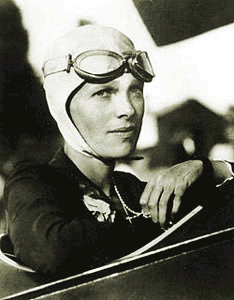 |
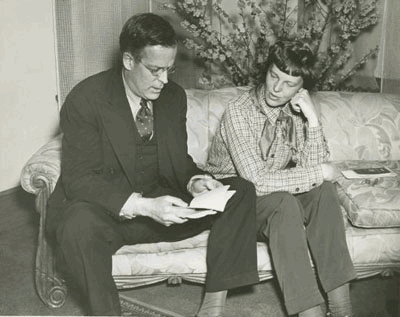 |
By the time aerial navigator
Fred Noonan made an alleged drunken stupor pass at Amelia Earhart in
the new movie “Amelia”, I felt like standing up and cheering
that finally this milque toast biopic would get down to something we
didn’t already know about that 1937 flight.
Sorry to report 72 years later the last
flight of Amelia Earhart is still shrouded in mystery because in the
next scene just before the duo took off for Howland Island and never
came back -Noonan showed up at the boarding sheepish and apologetic.
The exploits of Amelia Earhart, first
lady of the air are now the stuff of a major Hollywood motion picture
just released in the USA last week titled simply “Amelia”
starring Hilary Swank and directed by Mira Nair.
The movie unfortunately lands at about
one star in the ratings with a story on autopilot although “Amelia”
is quite something to look at, filmed in glorious color with sumptuous
locations and costumes and as many stirring shots of a Lockheed 10 “Electra”
on the ground and flying around international orange painted on the
top of its wings, as can be imagined.
Everything else unfortunately, is dead
on arrival.
The thing most people today know about
Amelia is that she is a kind of black and white remote female aviation
figure from a long time ago.
Unfortunately this new movie does nothing
much to color that notion.
“Amelia” is wooden and uninteresting
to the point of boredom.
Hilary Swank who manages to look like
Amelia—seems at times detached—as in just going through
the motions to get the AE accent right during this two-hour movie.
Compared to DeCaprio’s Howard Hughes
& Cate Blanchett’s Katherine Hepburn or even Alec Baldwin’s
wonderful cameo of Juan Trippe, all in “The Aviator”- Hilary
Swank’s Amelia is at times spunky enough but minus much passion.
But there may be an upside.
I have always thought Amelia looked a
lot like Lindbergh and that resemblance added to her early 1930’s
appeal.
Swank, who looks like both Amelia and Lindbergh might consider playing
Lindbergh in a biopic.
After all Hillary gained her fame and
won an Academy Award playing a male in the movie titled “Boys
Don’t Cry”.
But if she plays Lucky Lindy, Hilary should
get a better script.
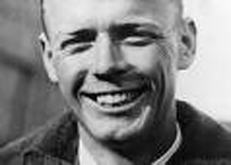 |
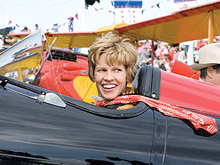 |
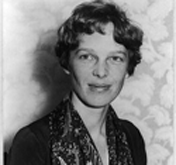 |
Separated At Birth? Charles Lindbergh, Hilary Swank and Amelia Earhart. |
||
In June 1976 as the 40th anniversary of
Amelia Earhart’s disappearance over the Pacific Ocean approached,
a great and today almost completely unknown aviation writer named Arthur
A. Riley created an in depth article about Amelia Earhart for our monthly
newspaper Air Cargo News that had started publication in New
York in March 1975, and just like the Flying Typers that you
are reading today, occasionally cast a view around aviation to feature
articles of unique common interest including aviation history.
Art had spent a great deal of time researching
and documenting the mystery of Amelia’s 1937 disappearance and
had finally come to the conclusion that she and her navigator Fred Noonan
(he had pioneered many first survey flights as navigator for Pan Am
Airways) were either just lost at sea or crashed and were taken prisoner
by the Japanese.
Art Riley was a former President of The
Aviation & Space Writers Association.
Riley was also a correspondent in Germany in 1948 where he filed numerous
stories picked up by hundreds of newspapers worldwide telling of the
great air cargo pioneering adventure The Berlin Airlift.
But before we get to Art’s piece
here are some other thoughts.
You’ll note pictures here all in
black in white include AE wearing a windowpane blouse, the last outfit
she was photographed in.
The new movie “Amelia” finally
reveals the true colors of that garment.
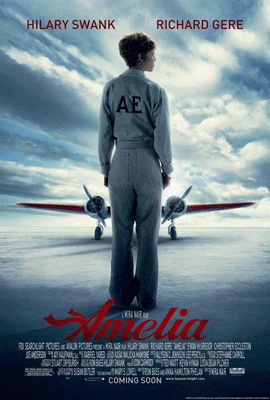 |
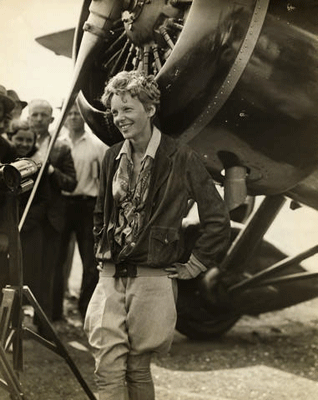 |
To view video and hear song click here |
|
But there is also a nagging
feeling that this film, while side-stepping anything juicy or provocative
about AE, actually goes out of its way to protect and even enhance her
reputation.
Amelia Earhart had an affair with Gene
Vidal (Gore Vidal’s Dad) but “Amelia” notes that they
also collaborated in an airline.
“Amelia” seems to imply that
AE founded a first air shuttle and that is just plain wrong.
The first successful air shuttle in USA
was Ludington Airlines from Newark to Philadelphia that actually took
off in 1930 before B&M (Amelia’s project) was even in business.
Ludington utilized Stinsons that made
hourly flights.
Later Eastern Airlines with an airmail
contract took over Ludington in 1931 and The Eastern Air Shuttle that
dominated The New York/Boston/Washington market until Donald Trump bought
it (and renamed it Trump Shuttle) in 1988, was born.
AE, for the record, lent her name and
image to many projects including a clothing line during her ride to
fame and even years after she was gone, Amelia Earhart Luggage was still
a strong brand.
Hollywood is what it is.
But particularly egregious at the end
of this film were some final images of Fred Noonan, head in hands at
the navigator’s station back of the plane as it headed for its
certain watery grave.
What absolute crap.
Perhaps one of aviation’s greatest
celestial navigators was lost off of foggy Howland Island in July of
1937 but this made up smoke screen to history is unhelpful and unwilling
to expand our understanding of those final moments.
Here were these two adventurers flying
off to eternity together after having almost circumnavigated the world—but
all the movie audience gets in the payoff scenes are separate individual
reactions inside that microscopically tiny airplane.
My guess is that Earhart & Noonan
held hands as they went down together!
Anyway “Amelia” in style was
patterned after an old fashioned movie—so why didn’t Mira
Nair, the director go all the way?
“Amelia” should have delivered
adventure, and romance and inside stuff of what was an inspirational
and truly heroic life instead of playing it safe and failing to deliver
anything new.
Just before final credits rolled—up
on the screen in flinty black and white were some pictures and newsreels
of the real Amelia Earhart—in front of us once again, big as life.
“Amelia” at least saved the
best for last.
Geoffrey
Earhart Search Narrows Alcohol may have been a
major contributing factor in the disappearance of famed aviatrix, Amelia
Earhart and her navigator, Fred Noonan on the most perilous leg of their
globe-girdling flight from Lae, New Guinea to Howland Island on July
2. 1937.
Reproduced from Air Cargo News June 1976 |
|
|
Women In Cargo Hall Of Fame |
An
Air Cargo News/FlyingTypers Original
Our exclusive series
“Women
In Air Cargo” asks our readers to send some words and a
picture about somebody that you know who is female and has made a
difference in air cargo.
|